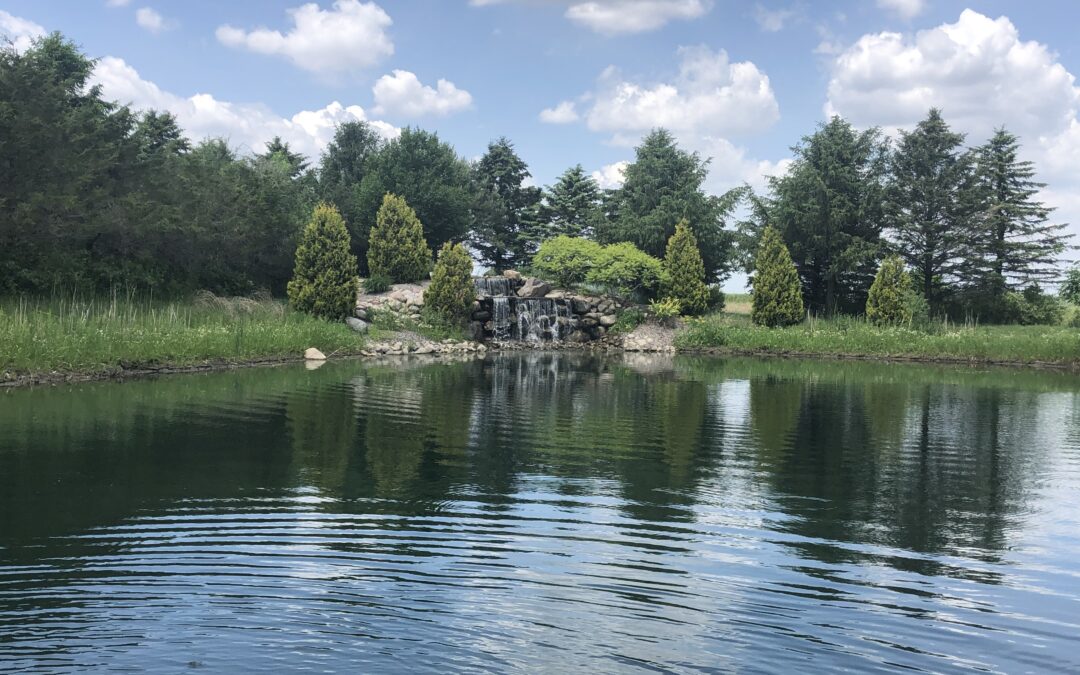Maintaining a pond can be quite a challenge when it comes to figuring out the right steps to achieve clear, algae-free water. With varying perspectives, it often becomes a complex and tangled web of contradictory advice. To simplify matters, we at Healthy Ponds have put together a list of recommended practices and things to avoid. These guidelines will assist you in establishing ideal water conditions for your pond, effectively managing algae, and preserving a balanced ecosystem.
For more information and tips or to see our pond water treatment products, be sure to look at our website!
Dos of Pond Upkeep
1. Wash Pond Filters
We suggest employing a hose to cleanse your filters. The chlorine in tap water exists in minimal quantities, and the residue it leaves on the filters has an inconsequential impact on the pond’s bacteria. When you use pond water for filter cleaning, it removes a more substantial portion of the pond’s bacteria, necessitating the subsequent replacement of pond water with tap water.
2. Use Bacteria to Treat Your Pond
Beneficial aerobic bacteria serve as the cornerstone of a pond’s ecosystem, maintaining a balanced environment by removing surplus nutrients and thwarting algae growth. They also safeguard against the formation of anaerobic sludge, which could discharge harmful hydrogen sulfide into the pond, and contribute to the well-being of fish by preventing illnesses. It’s important to replenish bacteria periodically. Like any living entity, bacteria have a finite lifespan, and once they expire, they require replacement.
3. Regularly Check Water Parameters
Even if your water appears clear, it may not provide the quality and healthiness your fish require. It’s important to regularly assess your water parameters, including pH, KH, and ammonia levels, every couple of weeks. If you’re unsure about the ideal water parameters for your pond, ask our experts. These conditions can shift swiftly and can significantly impact the well-being of your fish.
4. Run Pond Pumps All Year Long
Many pond owners believe it’s a good idea to switch off their pumps when temperatures drop. However, this action can lead to issues that may only become apparent in the spring. During winter, various debris accumulates in ponds and begins to decompose. If this debris isn’t removed, it releases extra nutrients into the water, which algae will use as a food source when spring arrives. To prevent this, it’s advisable to keep your pump and filter operational. This will help clear away the debris and maintain water circulation throughout the winter months.
5. Use Bacteria Product Throughout the Year
We receive reports from numerous individuals each week who experience a perplexing transition from a brilliantly clear winter pond to a green one in the spring. The reason behind this transformation lies in the fact that algae typically doesn’t thrive at low temperatures, which explains the pleasing appearance of ponds during winter. However, it’s important to note that bacteria also perish when temperatures drop below a certain threshold. With limited algae to sustain them, bacterial populations significantly dwindle by spring. This decrease in bacterial numbers, combined with the warming temperatures, swiftly paves the way for an algae bloom that can give your water a green hue.
6. Ask an Expert for Tips
No one wants to invest in a solution believing it will resolve their issue, only to discover they’ve chosen the wrong product or used it improperly. We offer professional guidance, not only concerning our products but also for any other pond-related questions, accessible via email or phone. Don’t hesitate to reach out and make the most of our expertise – give us a call!
Don’ts of Pond Upkeep
1. Change Your Filters as Soon as They’re Dirty
When you notice your filters becoming soiled while using a bacterial product, it’s an indication that your pond needs cleaning, not the filters themselves. In such cases, it’s advisable to clean the filters, not replace them.
Beneficial bacteria adhere to the filters and actively break down any trapped algae or sludge. If you opt to change the filters, you effectively eliminate all the valuable bacteria that have colonized them. However, if you find it necessary to replace your filters, make sure to apply a bacterial product directly to the new filters to reintroduce these essential microorganisms to your pond’s ecosystem.
2. Let Your Pond Fully Freeze During Winter
It’s crucial to prevent your pond from freezing over entirely during the winter. When the pond becomes completely frozen, it forms an airtight seal that restricts the entry of oxygen and the escape of harmful gases. Prolonged sealing of the pond in this manner could lead to the unfortunate consequence of fish mortality.
3. Include Too Many Fish and Plants
It’s quite common to want a lively pond with a variety of fish to enjoy. Nevertheless, overstocking a pond can impact its water quality significantly. Fish generate substantial waste, releasing ammonia that can elevate the pond’s pH levels, potentially resulting in fish becoming ill or even perishing.
4. Start Over
A common misconception when dealing with algae or green water issues in a pond is to completely drain, clean, and refill it. Surprisingly, this approach can be one of the worst actions to take in such a situation.
Emptying the pond not only removes the water but also eliminates any beneficial bacteria that have been present in the ecosystem. When refilling the pond, you introduce technically sterile water, which contains chlorine, harmful heavy metals, and minimal bacteria. Initially, the pond may appear pristine, as the sterile water remains clear for a few weeks. However, it swiftly turns green due to the absence of bacteria essential for combating algae spores.
Ask Us About Our Pond Water Treatment Products Today!
Are you looking for all-natural solutions to treat your pond water? At Healthy Ponds, we carry a wide selection of pond water treatment products. View them on our website or get in contact with our team for more information on how to keep your pond well-maintained!


